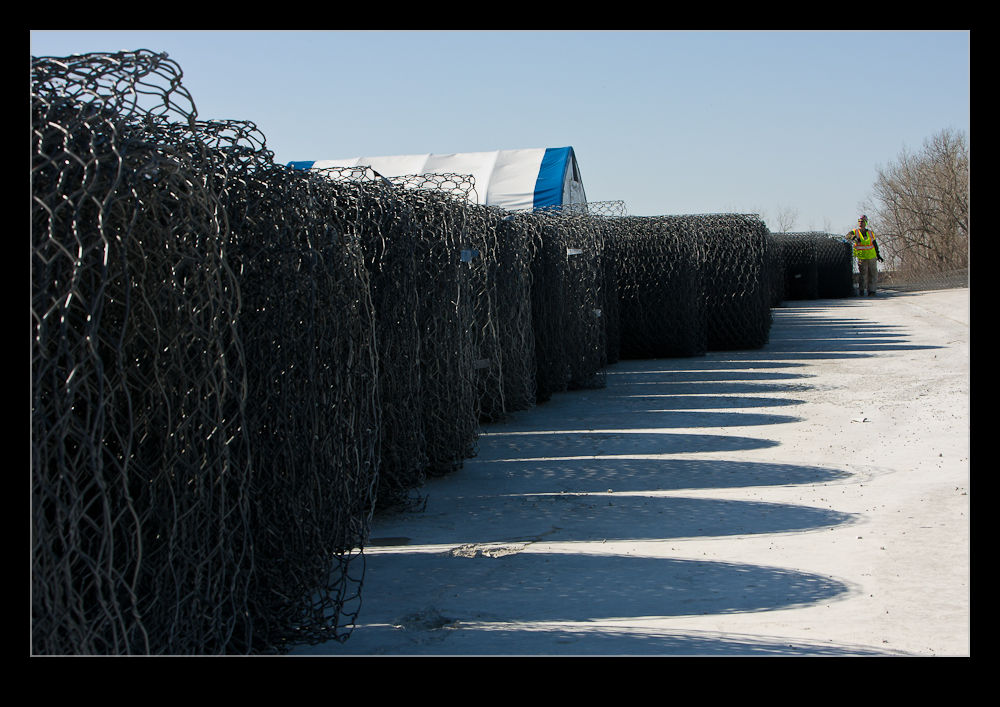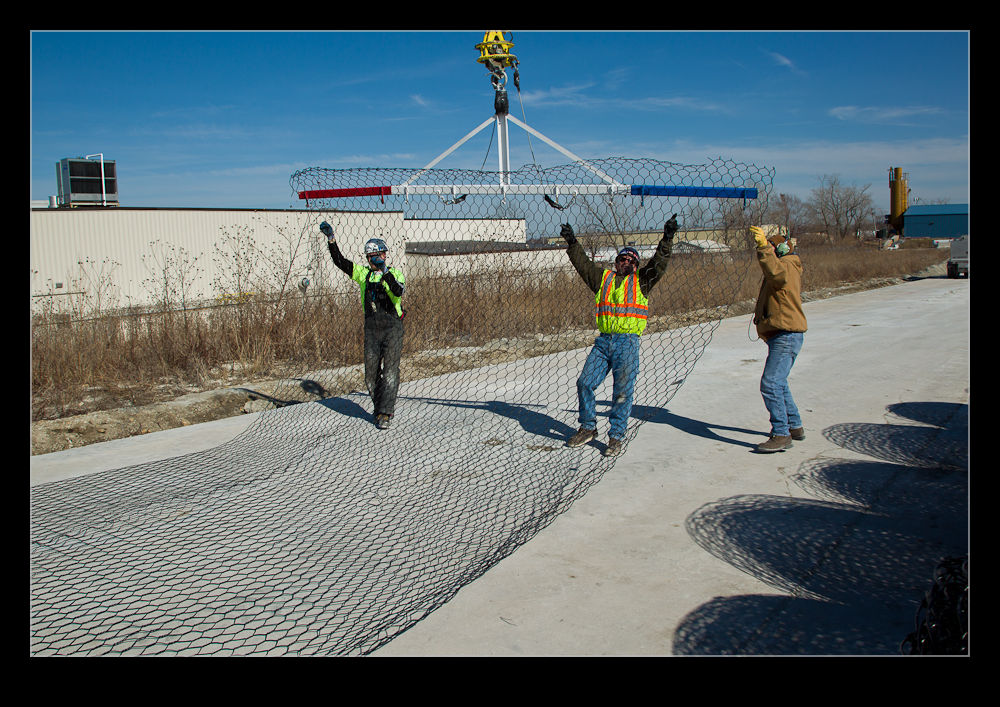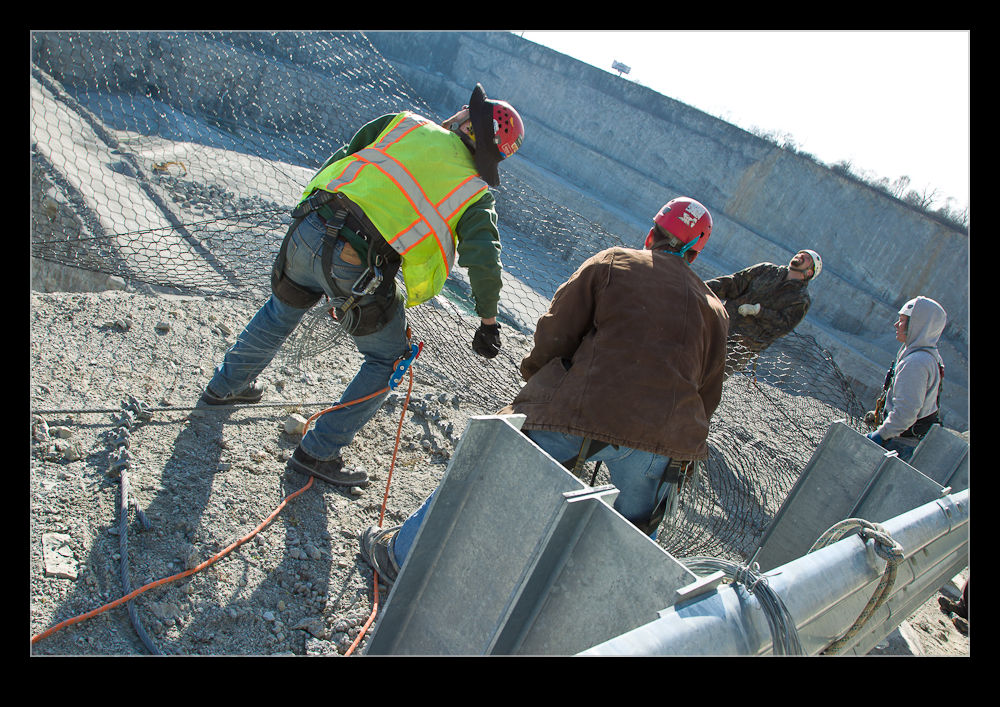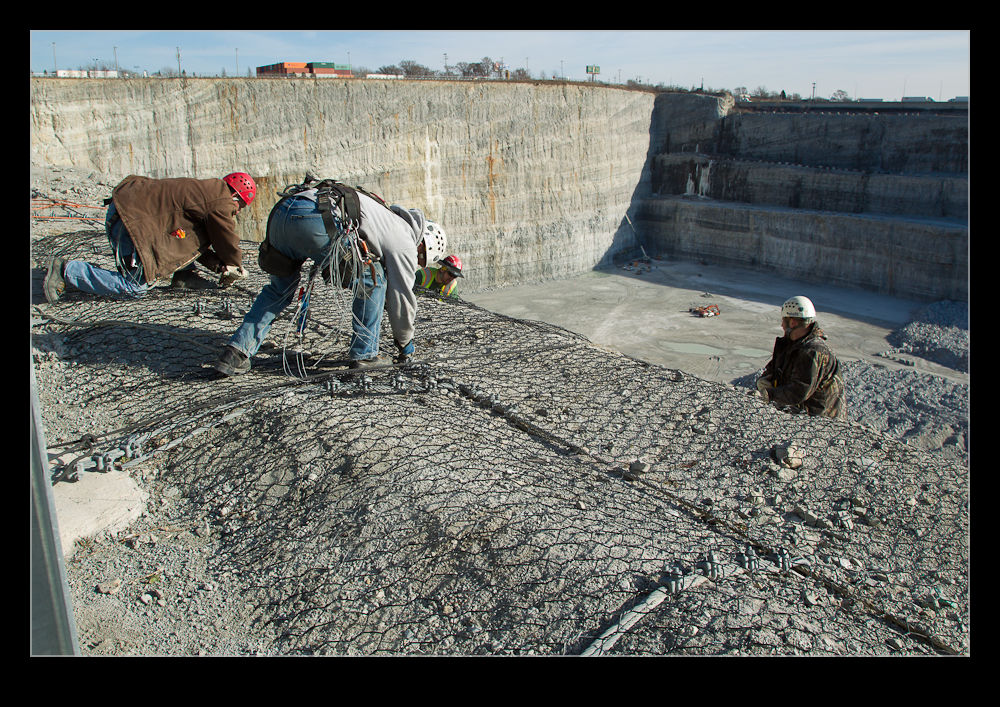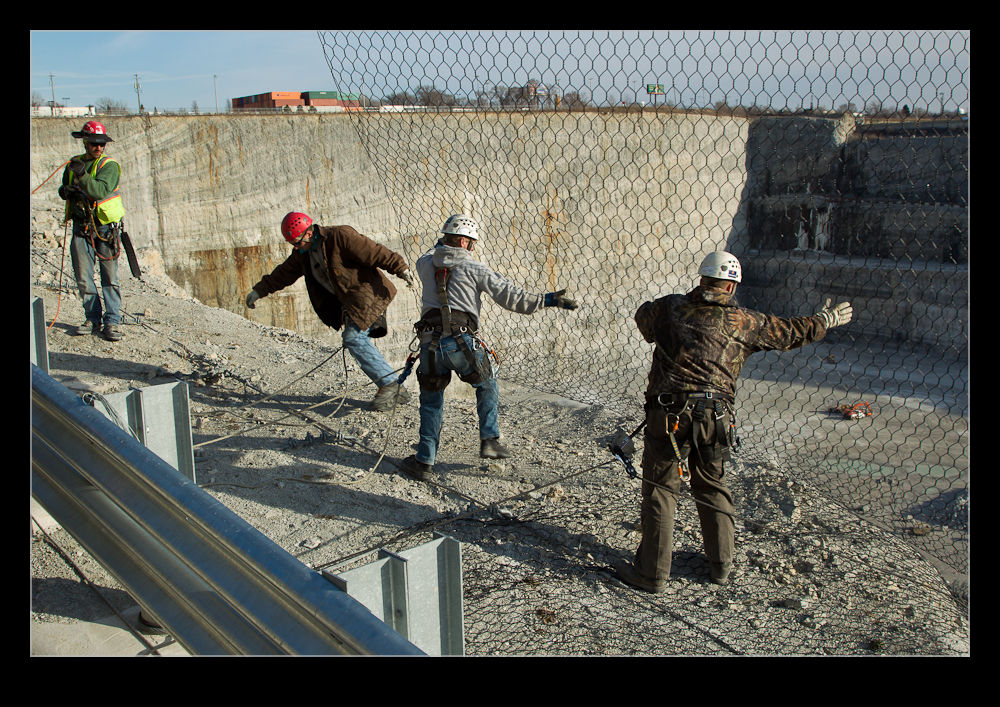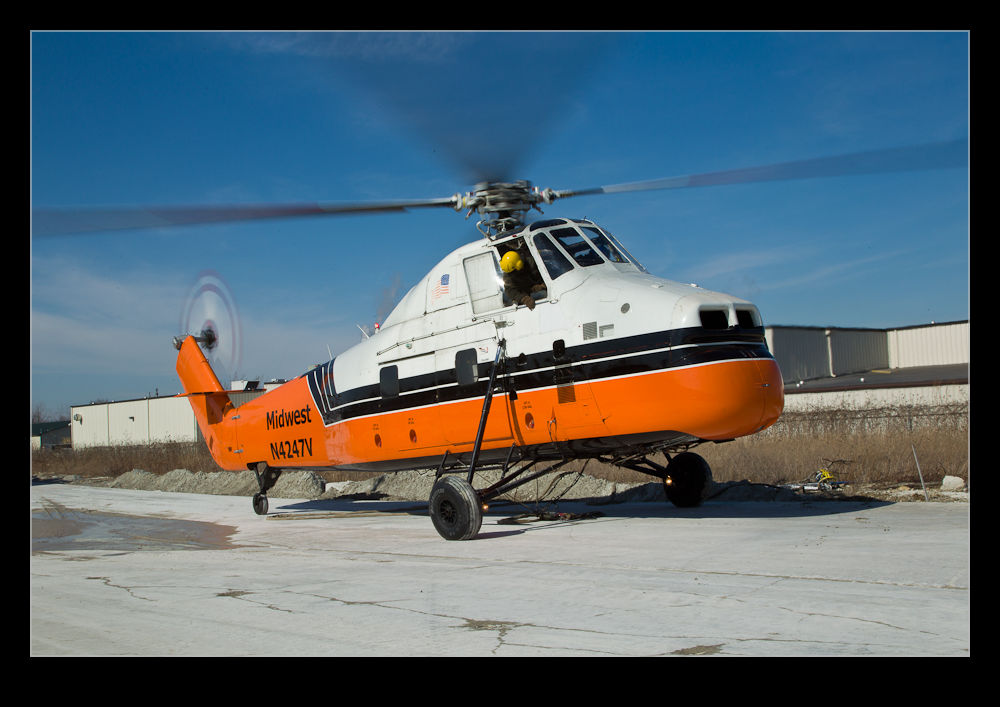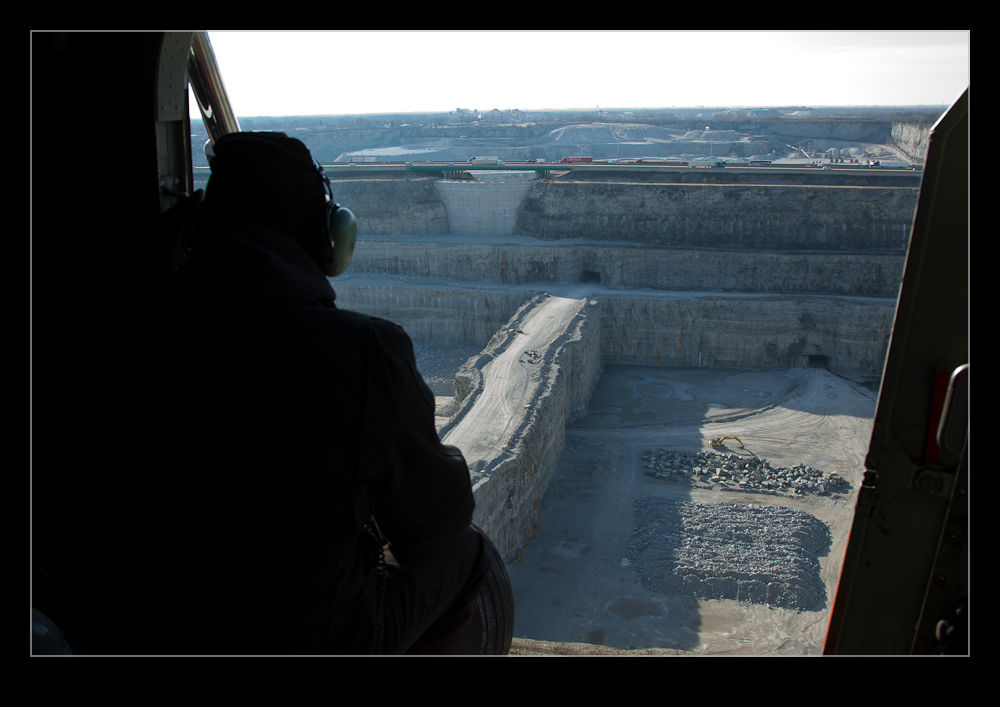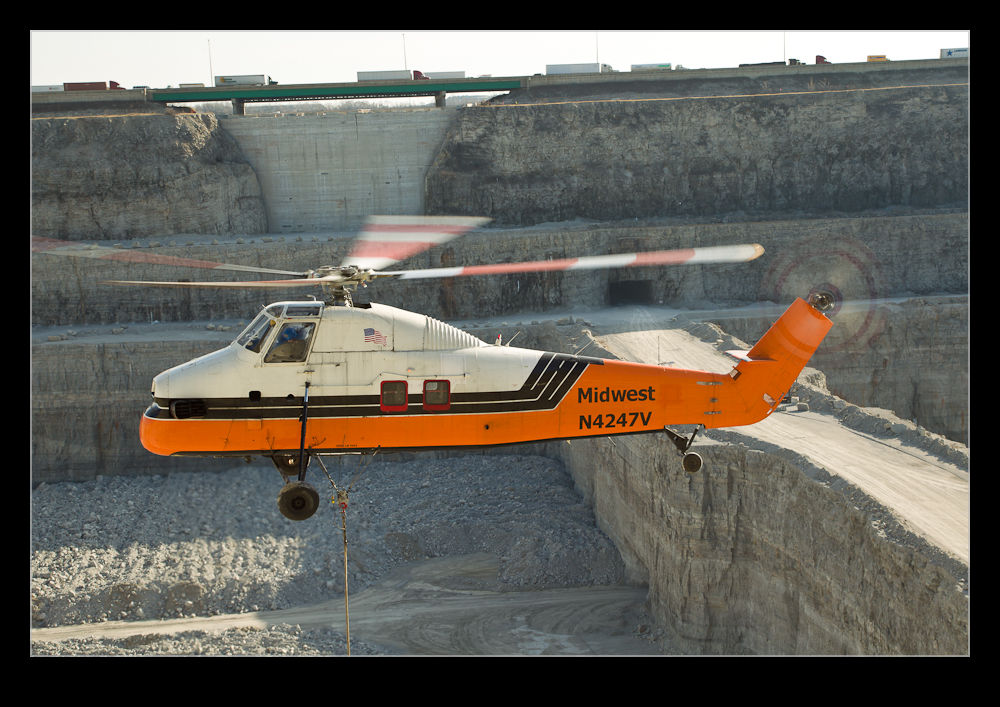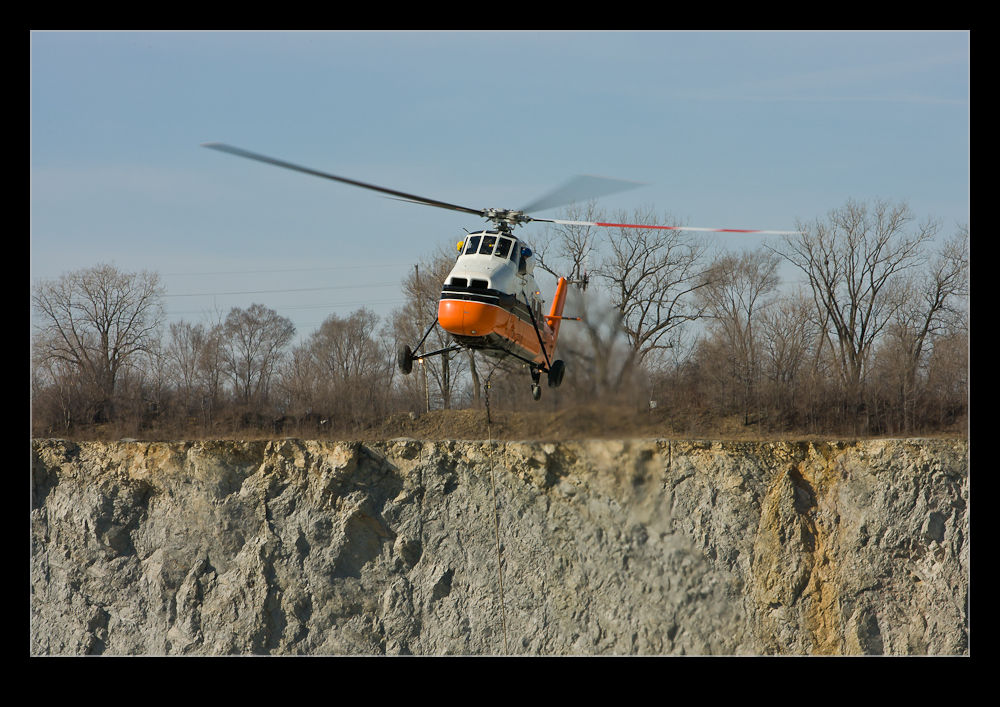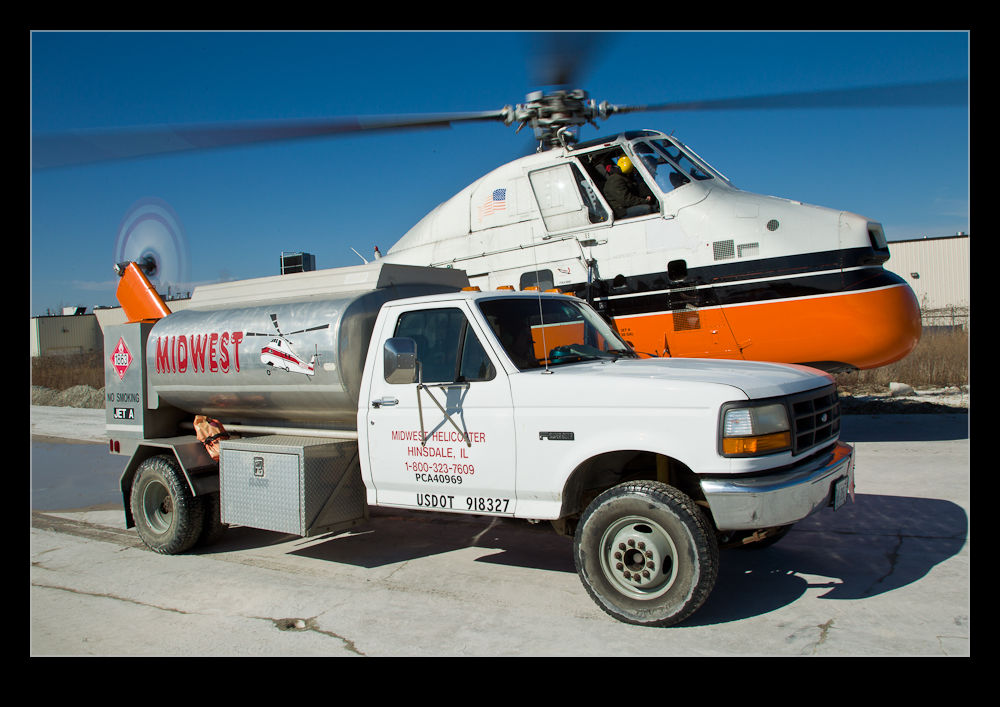The Thornton Quarry lift job with Midwest Helicopters was a full day job so it provided a bunch of opportunity to try different things. This was true for the stills but it also allowed me to experiment with the video as well. Since the aircraft was operating all day, I was able to get to multiple locations and see all aspects of the job as they happened. Normally, this isn’t possible since a lift will only last about 30 minutes. In that case, you have to pick the location that will get the shots you must have and accept that the alternative shots will not be made.
This time I was able to move around the whole site and capture as much as possible of what was going on. Some of the clips looked really interesting and the time but they actually proved to be no use. Some of the boring stuff as it appeared at the time actually ended up being really of use when it came to editing.
At this point, it is important for me to apologize to people like Gerry Holtz. Gerry is an editor and he does this sort of thing for a living. Anyone else who knows about editing professionally, you are all due my apologies and my respect. I am trying a bit with video editing but what I have learned is that it is bloody difficult to do.
On this shoot, most of the video was captured using my SLR. The rest of it was shot on a GoPro which is such a great little device to get something a little more unusual. It was handheld (or mounted in the case of the GoPro). No tripods or dollies and certainly nothing as impressive as a Kessler Crane!
I suspect that to be good at editing it is important to have had some education in the process. I am doing it the guy way – try something and then try something else and see what happens. Not even a manual to consult! Consequently, I make some progress but probably my approach starts from the wrong place. If I was going to do a lot more of this I would take the training aspect seriously. However, for the time-being, this is a little side hobby so I will probably stick with what I am doing.
Part of the fun(?) of the edit process is taking all of the disparate elements of the footage and trying to combine them into a coherent timeline. Part of the engineer in me thinks it should be delivered in the same order it happened. This is rubbish of course. The viewer has no concern of course. As long as the result doesn’t obviously have terrible jumps or continuity issues, no-one is going to be any the wiser.
Also, how much do they need to see. About eighty lifts were done during the day. Does the video need to have eighty lifts? NO! In the end, I concluded that two lifts were enough to tell the story. One wasn’t enough but it didn’t need more than two. I cut the length down as I went but even then it was still quite a long piece. A pro would probably have it down to a couple of minutes but then, as I mentioned, I am not a video pro.
One lesson I have learned as I have practiced this video stuff is how many of the tools the software has are no use at all. There are a million transitions between scenes, all of which make it look like you are experimenting with the software but they are a distraction from viewing. I have learned to use simple transitions that are short so they are not obvious to the viewer. They just stop the jump being the item the viewer focuses on.
Anyway, the final part of this story is that I was very happy with the result for this video. Unfortunately, it turns out the company that was doing part of the work is very sensitive about their equipment and doesn’t like the equipment being shown on the video so I have had to remove it from my YouTube channel. Consequently, I can’t include it in this post. Oh well…
